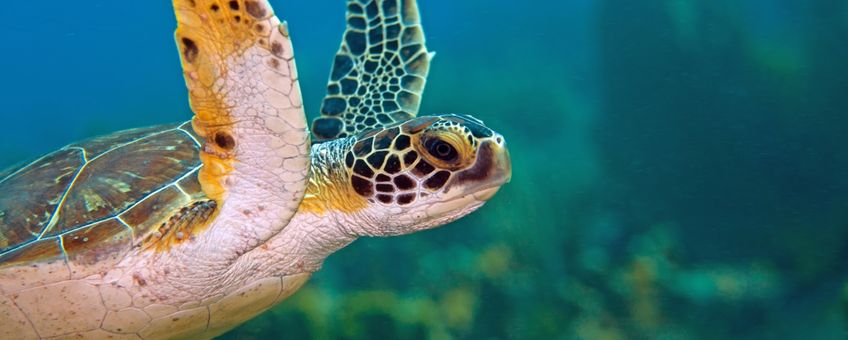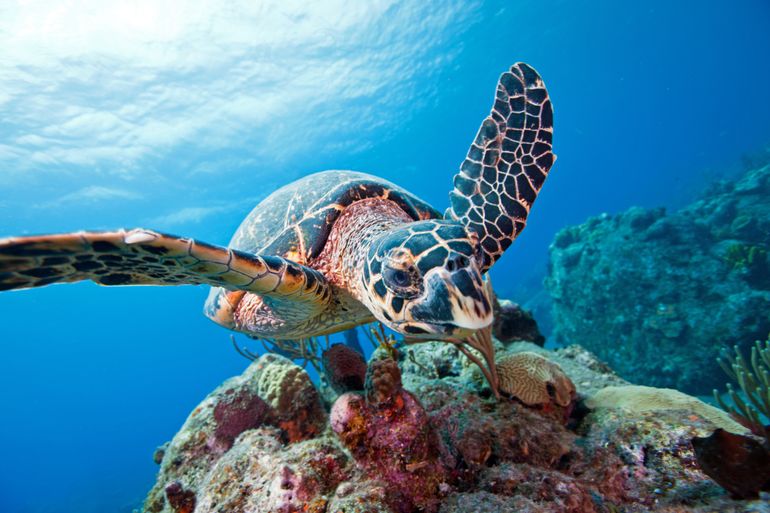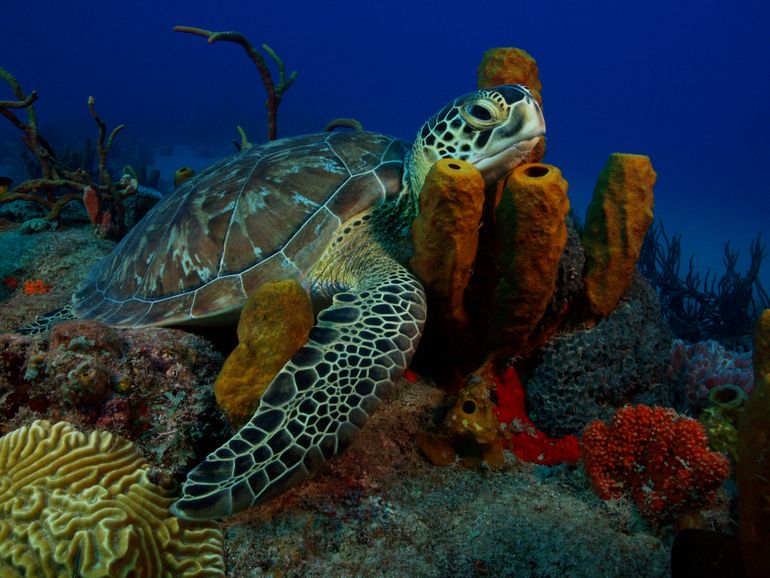
Sea Turtle Conservation Bonaire: A Year in Review
Dutch Caribbean Nature Alliance (DCNA)STCB works to collect vital information concerning turtle population trends. Using in-water survey methods, STCB volunteers and staff were able to identify and count sea turtles to help estimate annual abundance. Using data collected from the west coast and Klein Bonaire, from 2003-2018, STCB documented stable green and hawksbill turtle populations, fluctuating around 500 and 70 individuals respectively. Unfortunately, there has not been enough data from the east coast to draw similar conclusions, however, STCB is hoping to begin surveying the east coast this year.
Foraging
Lac Bay is an important foraging area for green turtles. Through net-capture surveys conducted between 2003 and 2018, STCB was able to show an increase in green turtle populations within the bay. They documented a total population of around 500 individuals in 2018. Unfortunately, due to the influx of sargassum in the bay and the resulting health concern over water quality, STCB was not able to conduct all surveys in 2019.
Bonaire is an important developmental habitat for green and hawksbill sea turtles. Through capture-mark-recapture research, STCB learned that green turtles in Lac Bay grow almost twice as much as green turtles on the west coast. Understanding differences in populations and the relationship between these environments and the health of sea turtles can be used to convey the importance of conserving crucial foraging habitats.

Nesting
Bonaire is also an important nesting site for sea turtles. STCB volunteers and staff walk the beaches commonly used by sea turtles to identify possible nests. These areas are then monitored and after a successful hatching event, nests are excavated and inventoried. This data has been used to show stable long-term nesting trends for both hawksbill and loggerhead turtles on Bonaire.
Successful breakthroughs were made in researching turtle migratory practices through the use of satellite transmitters. Since 2003, STCB has deployed 26 satellite transmitters on adult sea turtles. Understanding the migratory patterns of sea turtles, along with their foraging and breeding habits, is essential in designing conservation plans to protect these species.
Public outreach
In addition to sea turtle monitoring and research, STCB has an extensive public outreach program which they use to teach both locals and visitors about these important endangered animals. STCB also provides hands-on opportunities to get involved through fishing line and beach clean ups throughout the year. Increasing community involvement and overall understanding of these creatures is key in enacting positive change.
To find more ways you can get involved, check out STCB’s website for public speaking events, volunteer opportunities or ways to donate: http://www.bonaireturtles.org/wp/.

Report your sightings
Please report any sightings or photos you have of sea turtles and other species on https://dutchcaribbean.observation.org. This is a free website and app which allows local citizens to report sightings of important plants and animals. These tools are available in over 40 languages and can be used by biologists and citizens and tourists alike. Species reports by local communities are invaluable for nature conservation efforts to help increase public awareness and overall species protection. Besides, Observation.org is working together with Naturalis Biodiversity Center on automated species identification software. Your uploaded photos are of great value to make this possible. For questions, please contact research@DCNAnature.org.
More information
- The full STCB annual report (pdf; 22.4 MB)
Text: Sea Turtle Conservation Bonaire and Dutch Caribbean Nature Alliance
Photos: Brenda Kirby (lead photo: green turtle)
